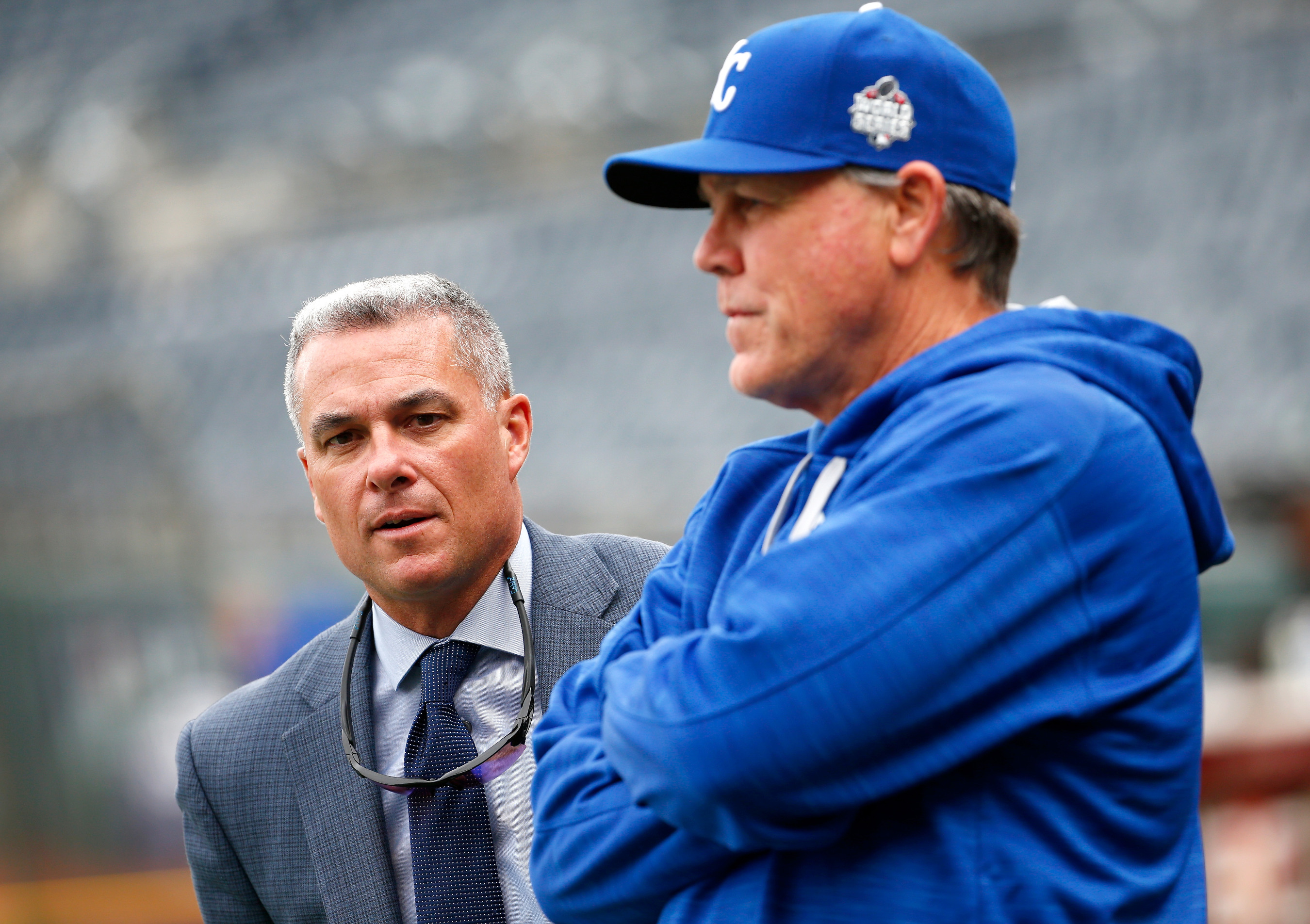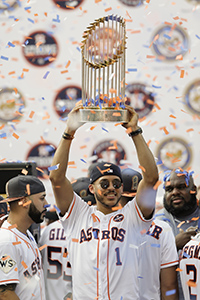A ‘Concerning’ Future For Traditional MLB Scouting


Image credit: (Photo by Barry Chin/Boston Globe via Getty Images)
As a signal to the rest of baseball that they were about to embark on a new era in the game, the Astros fired eight members of their scouting department late in the 2017 season. Seven months later, prior to the 2018 season, the Major League Baseball Scouting Bureau laid off its five remaining scouts.
Alarms went off throughout the scouting fraternity at the professional, amateur and international levels.
“I don’t know if ‘nervous’ is the right word, but we don’t know what’s going to happen,” said Chad Hermansen, a former major league player entering his eighth season as an area scout for the Angels.
J.P. Ricciardi, the former general manager of the Blue Jays and now in the front office of the Giants, also is unsettled about the future of traditional scouting.
“I’m really, really concerned,” Ricciardi said. “I’m very concerned about where it’s going.”
Although exact numbers are difficult to find, Dennis Gilbert, chairman of the Professional Baseball Scouts Foundation, estimated that 60 scouts were let go in 2018.
The fear within the scouting world is that all teams will soon follow the lead of the Astros, who in an attempt to shift focus to the analytics side of the game have more people evaluating player performances in their Houston office than they do in the field.
The reality is that baseball is experiencing an industry-wide paradigm shift not dissimilar to any other major business that begins adapting to new-age technology. While the surface issue appears to be about losing jobs (most apparently occurring at the professional level), the deeper upshot is about scouts losing their influence on the game.
“The (scouting) staff has to be willing to adapt,” said Dayton Moore, the Royals GM for the past 12 years. “They have to be enthused about new and creative roles. You always have to look to adapt a little bit.
“One of things I find fascinating and stimulating about the game is the different ways to look at it, the different viewpoints, respecting and enjoying the opinions of others who come from different experiences in the game. That’s what makes it fun.”

THE MELDING OF SCOUTING AND ANALYTICS has been around the game in some form or another at least as long as the designated hitter, which was instituted in the American League for the 1973 season. By then, radar guns had been added to a scout’s toolbox as a vehicle to verify what they had seen with their own eyes.
Moore recalls a Reds tryout camp he attended as a 16-year-old high school student in 1983 in Morton, Ill. The area scout for the Reds, Larry Smith, first talked to the campers about baseball’s incentive bonus plan, health plans and dental plans. Then Smith used his radar gun to clock throws from the outfield and by shortstops to first base. All along, he attempted to gauge the aptitude and mental toughness of the prospects.
Smith essentially was engaged in what would be described today as a hybrid scout, combining the data gathered through a radar gun with what he learned about a prospect’s makeup.
By the mid-1980s, sabermetrics had begun to infiltrate the game—led by Bill James—with the introduction of additional methods to analyze players’ performance statistically. Terms such as Pythagorean winning percentage, runs created and game score were used to evaluate a player and gradually took on greater meaning than batting average and ERA.
None of it happened without skepticism.
Around 1985, legend has it that a budding baseball analyst approached Pete Rose, then the manager of the Reds with a book full of data that computers were then able to generate on each major league player.
“Fine, what are you going to tell me that I don’t know?” Rose said.
“We can tell you which player in the major leagues hit more fly balls than any other player,” the analyst responded.
“You mean Gary Redus?”
“Yes, how’d you know that?”
“I just watch his swing. Look at his swing—it’s obvious.”
That same schism exists today between the analytics department of every major league team that believes TrackMan metrics such as launch angle, exit velocity and spin rate are infallible, compared with a scout’s supposition that a prospect’s makeup can only be ascertained through extensive vetting.
Bill Scherrer is a former major leaguer and longtime scout who has spent the past 17 seasons with the White Sox. He is a believer that analytics and scouting can work hand in hand. Yet he also recognizes that the veteran scout is having a difficult time believing the wet-behind-the-ears analytics employee has all the answers on a computer screen.
Scherrer compares it to his youth when he knew better than to tell his father—a veteran of 42 years as a wire chief—how to operate Western Union. “My Dad would have been very nice and said, ‘Son, go sit in the corner. Kids are to be seen and not heard.’ ”
Though there is room for argument, the Astros, Brewers, Dodgers, Rays and Yankees are believed to be the organizations most heavily invested in analytics. Those less inclined to lean toward advanced metrics are the Marlins, Mets and Orioles, though that perception is changing for the Mets and Orioles following the hires of new GMs this offseason.
Those organizations, as well as the remaining 22 teams, appear to be seeking the perfect mesh of the two worlds as baseball ventures into previously unchartered territory in the “most over-evaluated generation,” according to Moore
KIMBALL CROSSLEY ENTERED SCOUTING two decades ago as one who believed strongly in analytics. Interestingly enough, he was let go by the Blue Jays after 15 years, ostensibly because of the organization’s further bent toward the numbers game. Crossley is now a scout for the Padres.
“You can come at this both ways,” Crossley said. “There is no question the data can tell us things. That’s why I think spin rate is so interesting. It can tell us things that maybe we can’t see with our naked eye. But I think there are things the naked eye spots before the data gets to it: little changes or adjustments, whether it’s a swing change or a delivery change.”
All front-office executives and scouts contacted by Baseball America agreed that just as scouts have made evaluation mistakes for decades, so too have databases occasionally steered organizations in the wrong direction.
One of the most frequently cited examples of how the process can work both ways pertains to the Astros and their decision with back-to-back No. 1 overall draft selections to take Puerto Rican high school shortstop Carlos Correa in 2012 and Stanford righthander Mark Appel in 2013.
 Correa was picked based primarily on in-person scouting, and he has proved to be a frontline shortstop for Houston. Appel was believed to be an analytics-driven selection, and he is the third No. 1 overall selection in draft history to not appear in the major leagues. Steve Chilcott (1966) and Brien Taylor (1991) are the others, though the verdict remains out on lefthander Brady Aiken, another player the Astros drafted first overall in 2014, though he didn’t turn pro until the following year when the Indians made him the 17th overall pick.
Correa was picked based primarily on in-person scouting, and he has proved to be a frontline shortstop for Houston. Appel was believed to be an analytics-driven selection, and he is the third No. 1 overall selection in draft history to not appear in the major leagues. Steve Chilcott (1966) and Brien Taylor (1991) are the others, though the verdict remains out on lefthander Brady Aiken, another player the Astros drafted first overall in 2014, though he didn’t turn pro until the following year when the Indians made him the 17th overall pick.
The Astros’ progressive approach to analytics was considered a cornerstone to winning the 2017 World Series. In part, they took advantage early on of other organizations being slow to grow and buy in to analytics. Though it might be too soon to make a final judgment on the trade, it appears the Astros did just that in the 2014 deal that leaned on metrics to get Colin Moran, Jake Marisnick and Francis Martes from the Marlins for Jarred Cosart, Enrique Hernandez and Austin Wates.
Analytics departments have become commonplace, though no organization has yet to match the outlier status of the Astros. Yet even the Astros contend that conventional scouting remains vital to the operation, just different in manner. For example, the Astros now undertake the practice of sending a front-office staffer on the road to serve as an advance scout, only as needed.
Jeff Luhnow, the Astros’ GM who is considered the architect of the club’s recent success, responded this way in an email response to questions about scouting:
“Our goal, shared by most organizations, is to excel at player evaluation in order to make the best decisions for the amateur draft, major and minor league trades, international player signings and other avenues of adding players (like) waiver claims, the Rule 5 draft, etc.
“For us, this involves having a talented and experienced group of scouts in the field in addition to player evaluation resources in the front office. The Astros have invested heavily in player evaluation resources, people and tools, and will continue to in order to accomplish our goals of being elite in player evaluation.”
Most organizations have retained the bulk of their area scouts for amateur and international evaluations, though their roles have been altered by a requirement to gather more analytics-related information for the front office to digest. There no longer is a need to attend a prospect’s every high school game, and video is used in increasing frequency to evaluate college prospects.
It appears important to recognize that baseball has entered the infancy of a transitional period in how each organization manages to mesh the avant-garde world of analytics with the old-school ways of scouting.
Perhaps Ricciardi is the best example of putting that line of thinking to work. He was weened in the Moneyball era with the Athletics before introducing the principles of analytics as Toronto’s GM. Now he seems to have swung back to a more neutral position, if not one more sensitive to the plight of scouts.
“I have changed with the ways,” Ricciardi said. “I have changed enough with the ways to know and realize that there’s still enough baseball people who can help make baseball decisions that aren’t totally, 100 percent analytically driven.
“I think we’re going to be really foolish when we lose those type (of scouts) who bring insight and a lot of good ideas to the table.”
In the end, data is based on past performance. Scouting projects the future in evaluations. In between is the likely happy balance between what will serve baseball best in the long term.

Comments are closed.